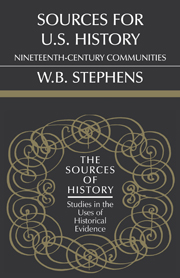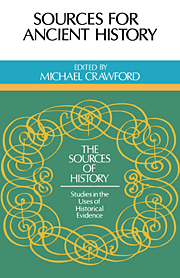5 results in Sources of History

Sources for U.S. History
- Nineteenth-Century Communities
-
- Published online:
- 05 June 2012
- Print publication:
- 16 May 1991

Sources for English Local History
-
- Published online:
- 04 February 2010
- Print publication:
- 10 September 1981

Sources for Modern Irish History 1534–1641
-
- Published online:
- 08 January 2010
- Print publication:
- 18 April 1985

Sources for Ancient History
-
- Published online:
- 06 January 2010
- Print publication:
- 17 November 1983

Law and Politics in Middle Ages
-
- Published online:
- 13 November 2009
- Print publication:
- 28 October 1976

